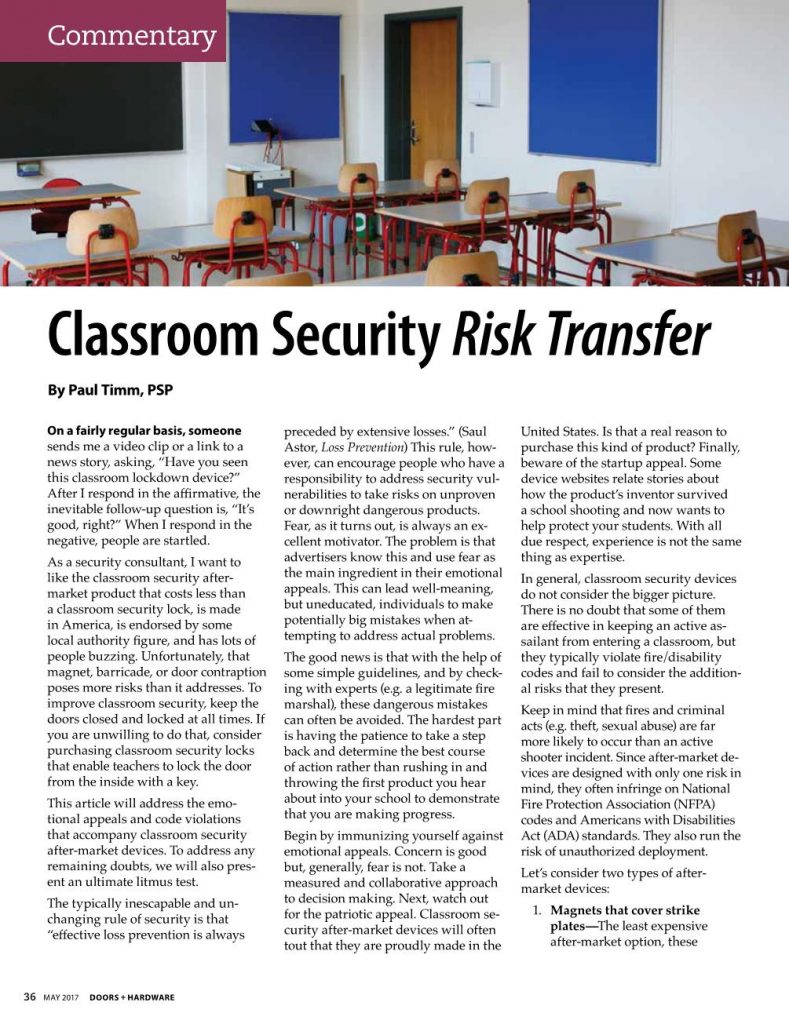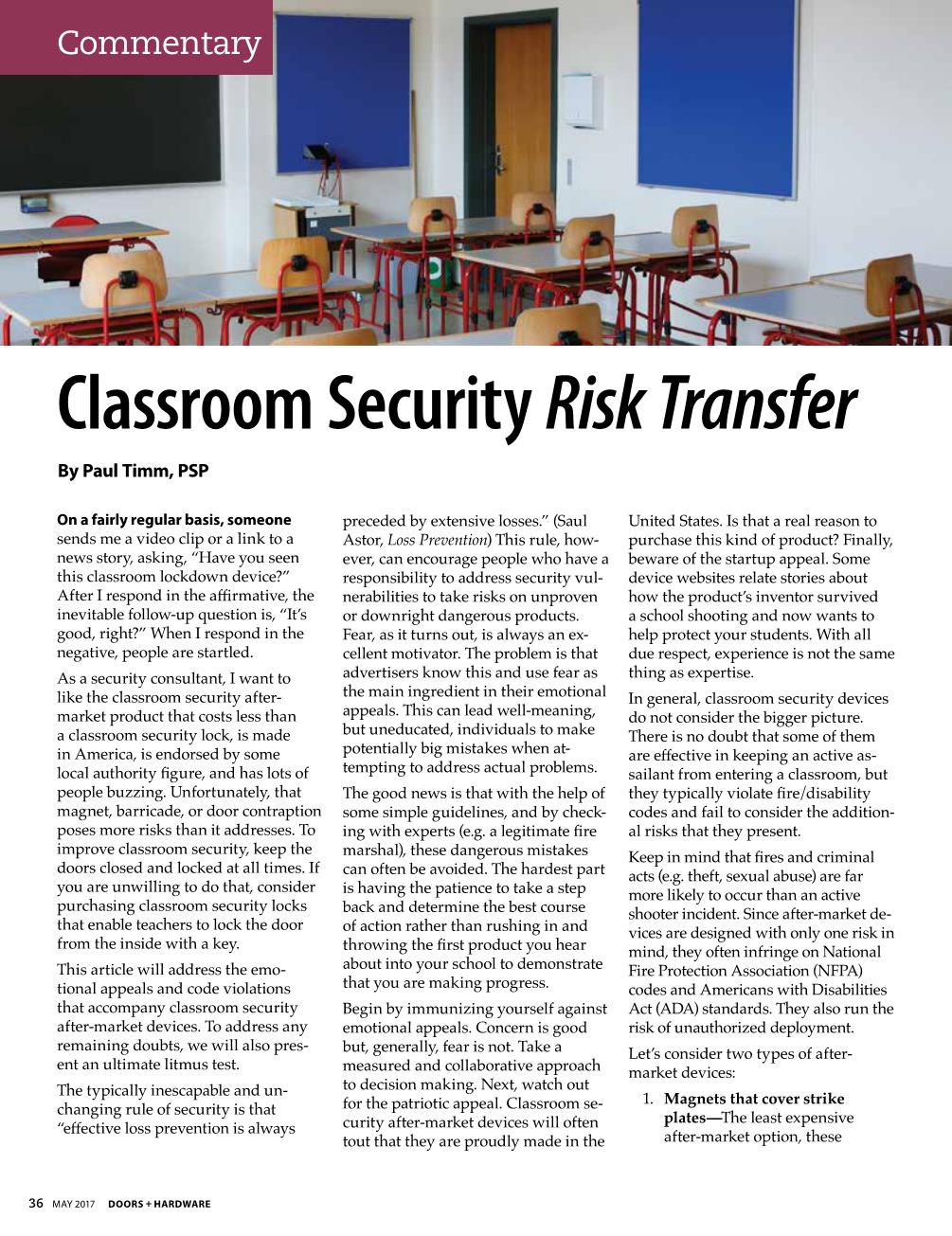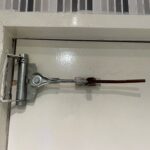 This article was published in the May 2017 issue of Doors & Hardware. The author, Paul Timm, PSP, is Vice President of Facility Engineering Associates. He is a board-certified Physical Security Professional (PSP), the author of School Security: How to Build and Strengthen a School Safety Program, and a nationally acclaimed expert in school security. Contact him at paul.timm@feapc.com.
This article was published in the May 2017 issue of Doors & Hardware. The author, Paul Timm, PSP, is Vice President of Facility Engineering Associates. He is a board-certified Physical Security Professional (PSP), the author of School Security: How to Build and Strengthen a School Safety Program, and a nationally acclaimed expert in school security. Contact him at paul.timm@feapc.com.
~~~
On a fairly regular basis, someone sends me a video clip or a link to a news story, asking, “Have you seen this classroom lockdown device?” After I respond in the affirmative, the inevitable follow-up question is, “It’s good, right?” When I respond in the negative, people are startled.
As a security consultant, I want to like the classroom security aftermarket product that costs less than a classroom security lock, is made in America, is endorsed by some local authority figure, and has lots of people buzzing. Unfortunately, that magnet, barricade, or door contraption poses more risks than it addresses. To improve classroom security, keep the doors closed and locked at all times. If you are unwilling to do that, consider purchasing classroom security locks that enable teachers to lock the door from the inside with a key.
This article will address the emotional appeals and code violations that accompany classroom security after-market devices. To address any remaining doubts, we will also present an ultimate litmus test.
To continue reading, click here to download the article reprint.
You need to login or register to bookmark/favorite this content.







Leave A Comment